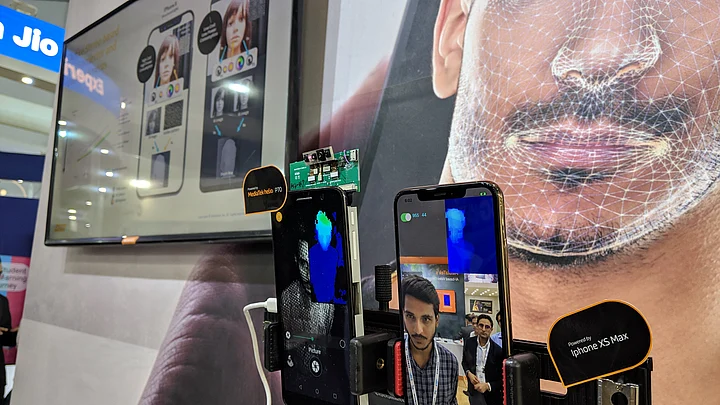Apple launched its Face ID technology on the iPhone X last year with much fanfare and this led to Android users seeking something similar for their phones.
While Samsung has an iris scanner built into its high-end Galaxy S9 series and the Note 9, none of the so-called affordable Android phones have managed to replicate Apple’s Face ID tech, without just a software trick that’s not as efficient. Apple’s Face ID is built into its hardware.
But that’s likely to change soon, with Mediatek, another chipset manufacturer coming out with its own version of an AI-based Face ID-like feature, that’s built into the hardware.
We got a demo of the feature that will be rolling out to affordable phones (under Rs 50,000) powered by the Mediatek P70 processor. Products launching in Q1 2019 will have this hardware.
The security of this Face Lock works similar to that of Apple's Face ID with the help of a laser built into the sensor, which scans the entire depth of the face. This ensures that unlike existing face ID tech, the entire face details are captured, before unlocking the device and thereby making it secure.
This means, any phone powered by the P70 with its Face Lock feature will be capable of unlocking even if the user is in a pitch dark room.
The underlying technology of the face lock feature from Mediatek is similar to that of Apple’s Face ID, but the company says the difference is in its cost.
Mediatek said it is a using roller shutter for its Face Lock feature - where the sensor progressively scans the image from one end to another, while Apple tends to make use of the global shutter sensor - that takes in the whole image at once. This adds to the cost of the device. Mediatek also said the biometrics it scans aren't saved anywhere on the device.
It’ll be interesting to see more brands warm up to this biometric technology, that was first seen on the Apple iPhone X last year. This could encourage Android users to look at Face Lock as a possible feature to make payments.
(At The Quint, we question everything. Play an active role in shaping our journalism by becoming a member today.)
